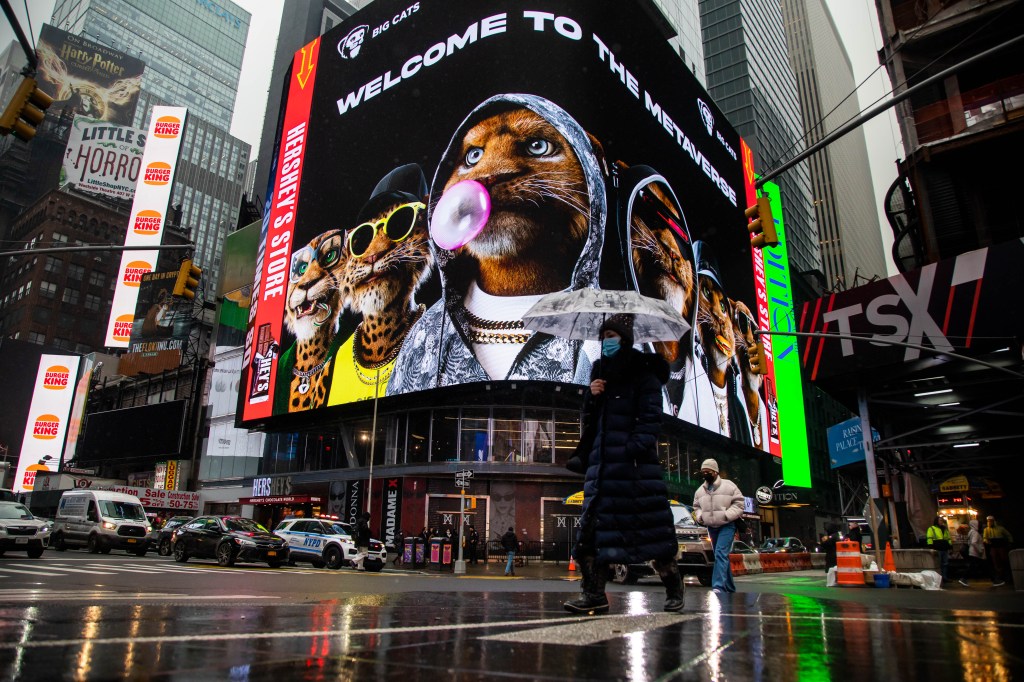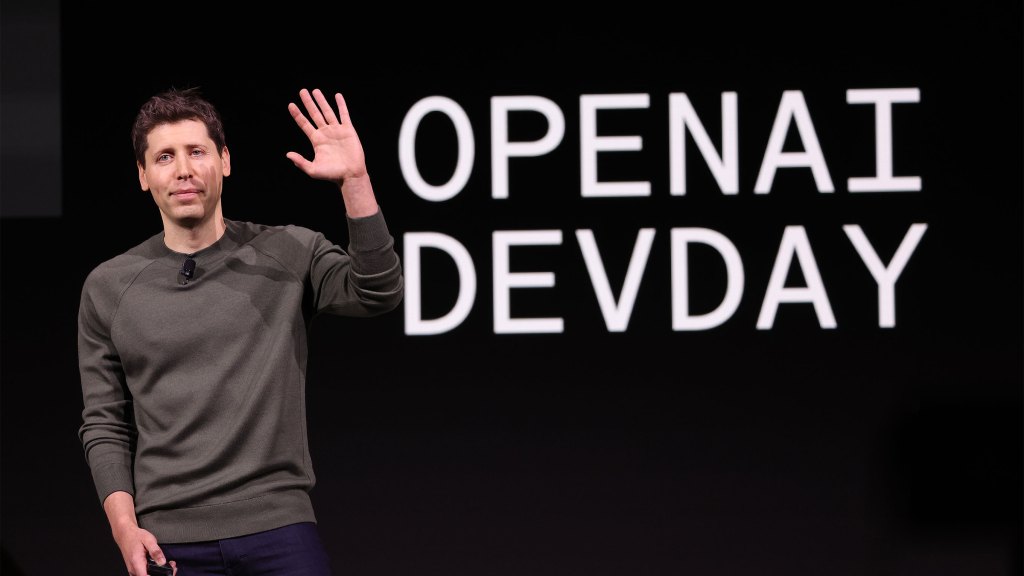The NFT art market is incredibly hot.
Collectors spent $22 billion on NFTs in 2021, up from $100 million the year before.
Late last month, Canadian videographer Dan Olson released a two-hour video about his strongly held views on web3 and blockchain technology titled “Line Goes Up — The Problem With NFTs.”
In a nutshell: Olson asserts that web3’s technological limitations are such that it will never deliver on its vaunted promises. He goes a bit further, essentially describing cryptocurrency as a scheme that creates more problems than it solves, is inherently inefficient, and allows early adopters to fleece later entrants until the system runs out of greater fools.
I asked John and Alex to share their thoughts on Olson’s video as a point of departure for discussing the state of the crypto industry in general. Here’s where we ended up:
- Walter Thompson: NFTs are scarcely minimum viable products
- John Biggs: A shakeout has to happen for the tech to take off
- Alex Wilhelm: I just don’t want your NFT
Walter Thompson: NFTs are scarcely minimum viable products
It is factual to describe cryptocurrency projects and non-fungible tokens as speculative in nature. It’s also inarguable that early crypto adopters, who enjoy a tremendous advantage over later entrants, are prone to gloss over widely discussed ethical concerns about how much energy is required to produce these digital items and how they are marketed. That’s important, but there’s another issue at work here:
Right now, NFT projects are, just barely, minimum viable products blockchain investors are using to validate their assumptions.
Non-fungible tokens have all the hallmarks of an MVP: a high barrier to entry that discourages all but the most enthusiastic early adopters, a minimal feature set, fluid use cases, and suggestions of future benefits that will more than offset today’s growing pains.
A Pew Research survey found that about 16% of Americans have bought cryptocurrency so far, which shows how quickly it’s catching on. Publicly traded companies like Nike and Visa are spending millions to get in early on these unregulated, highly speculative investments.
Also worth noting: most U.S. residents couldn’t put their hands on $1,000 if they had an emergency expense.
As Steve Blank, an entrepreneur who helped popularized the MVP framework, once wrote, “you’re selling the vision and delivering the minimum feature set to visionaries, not everyone.”
NFT auction marketplace OpenSea, home of the Bored Ape Yacht Club, closed a $300 million Series C last month that valued the company at $13.3 billion. According to CEO Devin Finzer, the platform increased its transaction volume by “over 600x” in 2021, earning hundreds of millions in transaction fees.
I don’t study the market closely, but a +600x YoY increase does not strike me as a sustainable growth rate. As TechCrunch reporter Lucas Matney observed, “OpenSea realizing this valuation will rely on its continued success and its ability to entice newbies into the burgeoning world of crypto collectibles.”
And so, we find Paris Hilton and Jimmy Fallon comparing Bored Apes on “The Tonight Show” and noted wellness enthusiast Gwyneth Paltrow using her first tweet of 2022 to announce that she’d joined BAYC in the form of a blindfolded, blue-eyed chimp wearing a Breton. In a Rolling Stone interview, Seneca, the artist who worked as lead designer for Yuga Labs’ BAYC collection, said the amount of money she received for her work “was definitely not ideal.”
I know many struggling creatives who are looking for new revenue channels. Also true: the average median rent in San Francisco is $3,200 and minting fees can run into hundreds of dollars.
Perhaps mainstream consumers will be satisfied with the current level of artistic quality and creative diversity in the NFT art market. But before they could be sold on the prospect of creating inventory for NFT platforms, the artists I know would first need to be convinced that they’re better off paying gas fees instead of sharing the cost of a gallery rental with a few friends.
John Biggs: A shakeout has to happen for the tech to take off
The worst thing about “Line Goes Up” is that its premise is correct: The line is going up and that is affecting the market in ways that destroy true innovation. When a technology, any technology, makes money, there is a tendency among the kleptocratic and simply hedonistic to hold onto the reins and let things rip. Robber barons didn’t stop to fix the railroads when they were making millions on cross-country travel. The owners of the Triangle Shirtwaist Factory were certain their solutions were top-notch until proven, tragically, they were not. The same can be said of crypto. The line, in this case, has been going up for 14 years unceasingly and with unerring certainty. But it shouldn’t be until the issues brought up by Dan Olson’s video can be fixed.
In a bull market, everyone’s a genius. It’s time for some of those geniuses to step down.
The current crop of crypto oligarchs is the same ones who made their bones when Satoshi’s whitepaper was in its infancy. They erected a kleptocracy built on proof of work and there is no sane reason to change it now that everyone is rich. For all its egalitarian ideals of decentralized voting systems and DAO investments, the same folks are doing the same things over and over again. NFTs used to be called colored coins, which were supposed to be the original purpose of the bitcoin blockchain — the creation of an immutable internet. When everything in the code base is exactly the same, over and over again, the grifts become easier to spot while the true solutions fall by the wayside.
As we near a decade and a half of blockchain “innovation,” it’s time to admit that throwing the same tech at new problems is ridiculous. NFTs are crayon drawings hanging off of a line in a grade school classroom: important only to the creators and those with a vested interest in a particular child’s growth. To the rest of us, they don’t matter much, but we’re all being nice about the whole thing so we don’t insult some third-grader.
The entire crypto market needs and deserves technology that has been rebuilt and reorganized for actual use. The current blockchain offerings are difficult to use, easy to break and aimed at making the crypto-rich richer. If you want to sell me a metaverse ape that I can play inside of the next version of Halo, then by all means, point me to a solution that isn’t so mired in hucksterism and ridiculous gas fees. If crypto heads want mass adoption, they need to stop looking at the line going up and start building currencies and tech for a world when the line must, by definition, remain constantly flat.
Alex Wilhelm: I just don’t want your NFT
“Line Goes Up” is worth watching, regardless of what you think of the larger crypto economy and NFTs in particular. Everyone will be able to find something — a sentence, a paragraph, a section — that they disagree with, or consider too harsh. But that does not undercut the fact that, as explainers go, the monologue gets quite a lot right.
The clip does a good job detailing my core complaint with the current “web3” space: It’s a tool to financialize more of life and effectively turn more of our daily existence into chronic acts of speculation. That’s simply not something that I am interested in. To be even more clear, I don’t really like to speculate for any reason other than entertainment. So yes, I will play poker with you for stakes worth a decent dinner, but that’s where I stop.
Presenter Dan Olson says it is too expensive to actually store images on most blockchains, meaning that most NFTs really just point to external media — by now a pretty well-worn trope. But the fact that it is true doesn’t seem to have slowed the current hype cycle around NFT ownership, which is to say purchase. So, for the sake of argument, let’s drop the point and instead consider NFTs as the images that they point to.
I still just don’t want one. There are a few core reasons why people buy NFTs today. The first is for speculative reasons. Humans love to gamble, so this is not a huge surprise. As stated before, I am not really interested in this any more than I am in joining my friends in chasing biotech IPOs, or my other friends in their earnings-day options plays. Not interested.
But what about the other uses? Say, because I like the art in question, or I want to join a club?
On the art front, nearly all NFTs remind me of the stickers sold in quarter machines outside my childhood grocery store: loud, reflective, and generally trying to ape some cultural trend or subculture. I found them transgressive when I was 9. Then I turned 10. So, this element of potential NFT utility is unattractive to me. “Line Goes Up” does a pretty good job riffing through various NFT projects of both high and low repute, and from an aesthetic perspective, there’s really just not much there.
Is the “buy an NFT, join a club” idea more interesting? No. Growing up a West Coast kid, there were few private clubs, but those that did exist were ones my family was not a member of. I have retained my recollection of what it felt like to be excluded by class status. Now an East Coast dweller, I have found myself inside a good number of private clubs — old-school men’s clubs, private beaches, country clubs near private beaches, etc. — and let me tell you they are pretty OK. Mostly because you can play pickleball or look at the ocean.
NFT-linked club membership seems to take all the bad parts of private clubs and amp them up while taking away the actual scarcity that they solve for if you have money. Things like having pickleball courts, or a slice of ocean beach that you can only access with the right pass. You get to pay more to get less, while further entrenching a system that is inherently classist.
It’s not a surprise that the OG crypto wealthy are into the model. They are the landed gentry, and no one loves a class system more than the folks at the top. But what makes fintech interesting more broadly is its potential to empower the historically disenfranchised, not to create an NFT auction whereby dweebs try to spend digital money to get access to a new club of fellow speculators. I can hardly imagine a room that I want to be in less.
Back to art: Most artists won’t be able to even access the NFT-linked private clubs, because NFTs failed to create wealth for artists in a general sense, exceptions to the side. So, no, I don’t want your NFT. It has no draw for me.
“Line Goes Up” does a good job noodling on the hows and whys of the crypto market and who is getting rug-pulled and how, but all that mostly reinforces for me the fact that there’s no there there to this particular speculative mania.































Comment